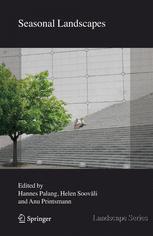

Most ebook files are in PDF format, so you can easily read them using various software such as Foxit Reader or directly on the Google Chrome browser.
Some ebook files are released by publishers in other formats such as .awz, .mobi, .epub, .fb2, etc. You may need to install specific software to read these formats on mobile/PC, such as Calibre.
Please read the tutorial at this link: https://ebookbell.com/faq
We offer FREE conversion to the popular formats you request; however, this may take some time. Therefore, right after payment, please email us, and we will try to provide the service as quickly as possible.
For some exceptional file formats or broken links (if any), please refrain from opening any disputes. Instead, email us first, and we will try to assist within a maximum of 6 hours.
EbookBell Team

5.0
40 reviewsSeasonality is so obvious that we very often forget about it when doing landscape research. Seasonality is the interface where humans and nature really interact. Seasonality is expressed both in the natural rhythms of the landscape as well as in human lifestyles. Seasonality creates varying patterns of use and appears in spatial practices, paintings, human behaviour. Also, seasonality itself changes together with societal changes – in agricultural societies, summer used to be the working season and winter the resting one; now we are more and more used to summer holidays.
Landscapes are seasonal both in terms of time and space, the boundaries between seasons are celebrated – do different seasonalities influence also our mindsets? In most cases we talk about (and paint and study) summer landscapes, but there are more than that. There are times with less light, less leaves on the trees to influence visibility, times when moist or snow make places inaccessible. Should seasonality be taken into account in planning, and if yes, then how?
This book studies seasonal landscape in Scandinavia and Brazil, on the Aegean islands and in European mountains, in agriculture tourism, in cities and in the countryside.